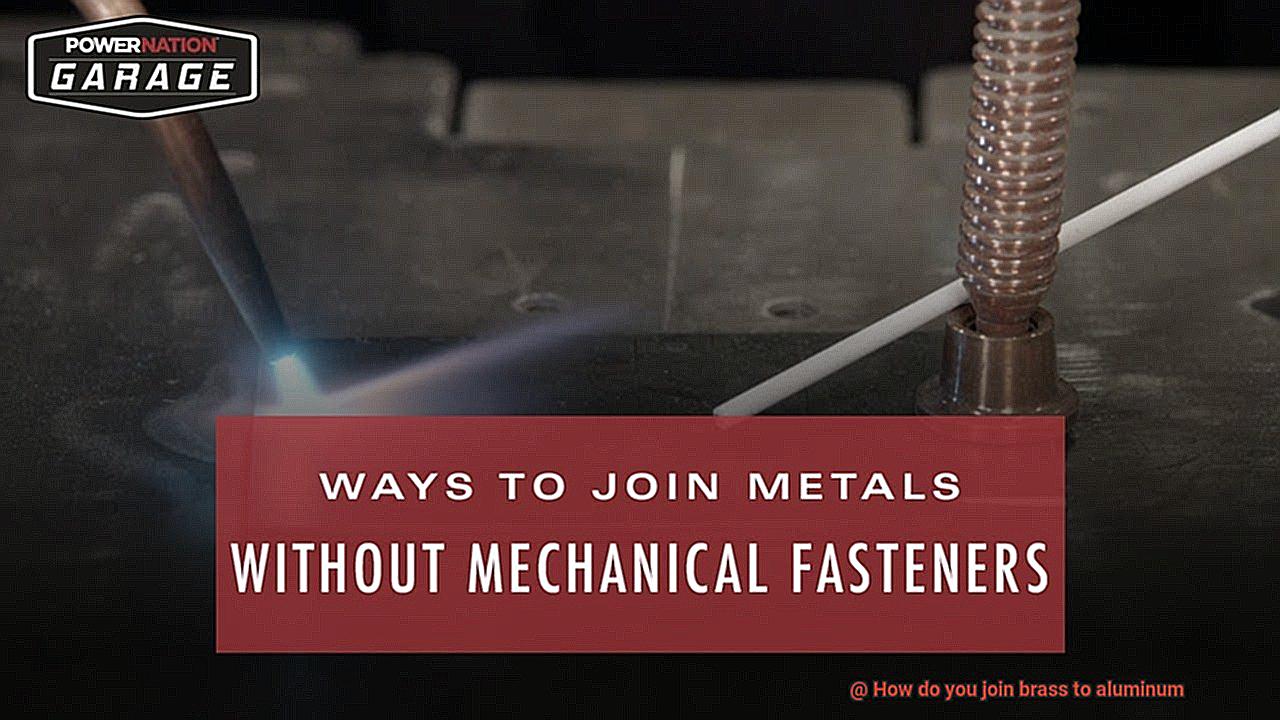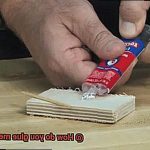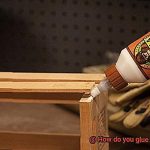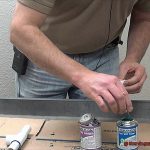You want to join brass and aluminum? Well, you’re in the right place. Whether you’re tinkering with your car or building a rocket ship (hey, dream big.), knowing how to connect these two metals is a must. In this blog post, we’ll dive into the nitty-gritty of joining brass to aluminum. Get ready for some expert tips, step-by-step instructions, and all the juicy details you need to achieve an amazing bond between these two dissimilar metals.
Step 1: Prep Like a Pro
Contents
- 0.1 Step 1: Prep Like a Pro
- 0.2 Step 2: Bridge the Gap
- 0.3 Step 3: Choose Your Weapon
- 0.4 Tips and Advice:
- 1 What is Soldering?
- 2 Advantages and Disadvantages of Soldering for Joining Brass to Aluminum
- 3 What are Adhesives and Glues?
- 4 Advantages and Disadvantages of Adhesives for Joining Brass to Aluminum
- 5 What are Mechanical Fastening Methods?
- 6 Advantages and Disadvantages of Mechanical Fastening for Joining Brass to Aluminum
- 7 What is Brazing?
- 8 Advantages and Disadvantages of Brazing for Joining Brass to Aluminum
- 9 Conclusion
Before diving into the joining process, let’s talk about surface preparation. Think of it as giving your metals a spa day – they deserve it. Start by cleaning both the brass and aluminum surfaces like there’s no tomorrow. Use a degreaser or solvent to banish any greasy fingerprints or dirt particles. Then, grab some sandpaper and give those surfaces a gentle scuffing. Trust me; this roughening will make all the difference in creating a strong bond.
Step 2: Bridge the Gap
Now that your surfaces are squeaky clean, it’s time to bridge the gap between brass and aluminum. Since these metals have different physical properties (like trying to mix oil and water), using an intermediate layer is key. Picture it as Cupid’s arrow bringing these two lovebirds together. Consider using zinc-based solder or an aluminum bronze alloy as your intermediary material. This magical substance will help create a solid connection between brass and aluminum.
Step 3: Choose Your Weapon
Alrighty then – it’s time to choose your joining technique. You’ve got options here: soldering, brazing, or welding.
Soldering is like the friendly neighborhood method; it’s perfect for low-temperature applications where you melt a filler metal with a lower melting point than the base metals.
Brazing, on the other hand, is like turning up the heat. It requires higher temperatures to melt the filler material and create a super-strong bond. And if you’re feeling brave (or just really skilled), there’s welding – the big leagues. Welding demands special equipment and expertise, but it can handle even the toughest jobs.
Tips and Advice:
Find an intermediary material that plays well with both brass and aluminum – compatibility is key.
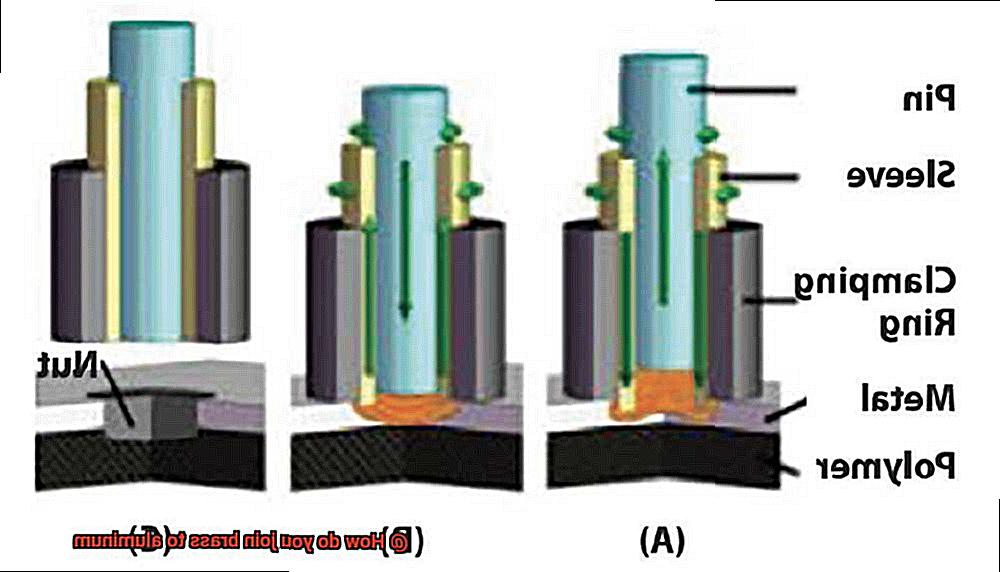
Safety first. Make sure you’ve got proper ventilation and protective gear when working with fluxes or filler metals.
What is Soldering?
Behind these marvels lies the art of soldering, a versatile technique used to join metal components together with precision and reliability. In this blog post, we will delve into the world of soldering, exploring its process, advantages, and applications across various industries.
The Process of Soldering:
Soldering begins with meticulous surface preparation. Like a painter priming a canvas, craftsmen clean and prepare the surfaces to be joined. This involves removing dirt, oxidation, and other contaminants using abrasive materials or specialized cleaning agents. The result is a pristine surface ready for bonding.
With the surfaces prepared, a heat source takes center stage. A soldering iron or torch ignites, radiating intense heat that melts the solder. The molten solder is then deftly applied to the joint area, where it flows like liquid silver between the parts being joined. As it cools, the solder solidifies, creating an unbreakable bond that withstands the test of time.
Advantages of Soldering:
Soldering possesses a myriad of advantages over alternative joining methods. Firstly, it allows for precise and permanent connections without compromising the integrity of the materials being joined. Delicate electronic components or intricate jewelry designs remain unscathed as the solder delicately seals them together.
Secondly, soldering exhibits remarkable versatility in joining different types of metals. Whether it’s brass to brass or aluminum to aluminum, soldering handles these unions with ease. It even triumphs over dissimilar metal combinations like brass to aluminum, seamlessly forging connections that were once deemed challenging.
Furthermore, soldering boasts excellent electrical conductivity, making it indispensable in applications where reliable electrical connections are paramount. The molten solder effortlessly fills gaps, creating a continuous pathway for electrical current to flow without interruption.
Applications of Soldering:
The applications of soldering span across industries, each benefiting from its unique capabilities. In the electronics industry, soldering assembles circuit boards and creates connections between components, enabling devices to function flawlessly. Plumbers rely on soldering to join copper pipes and fittings, guaranteeing leak-proof connections that safeguard buildings. Meanwhile, jewelry makers harness the power of soldering techniques to bring their artistic visions to life, uniting precious metals into magnificent pieces that captivate the eye.
Advantages and Disadvantages of Soldering for Joining Brass to Aluminum
Soldering, an ancient art of metal joining, offers a reliable and versatile technique for creating lasting connections. When it comes to joining brass to aluminum, soldering has its advantages and disadvantages. In this article, we’ll explore the benefits and drawbacks of using soldering as a method for joining these two metals.
Advantages:
- Strong Bond: Soldering creates a robust and enduring bond between brass and aluminum. The low melting point of solder allows it to flow between the surfaces, forming a solid connection that can withstand various stresses and vibrations without compromising the joint.
- Electrical Conductivity: Soldering ensures an efficient flow of electricity between brass and aluminum. This advantage is particularly crucial for joining electrical components or circuits, where uninterrupted electrical conductivity is vital.
- Versatility: Soldering offers versatility in joint design and application. It can join different shapes and sizes of brass and aluminum components, making it suitable for various projects and industries. With different types of solder available, customization based on specific needs is possible.
- Cost-effectiveness: Soldering is generally a cost-effective method for joining brass to aluminum. The required equipment is affordable and readily available, making it an attractive option for those looking to keep costs down. Moreover, the soldering process is relatively quick, saving time and resources compared to alternative methods.
Disadvantages:
- Temperature Sensitivity: One drawback of soldering is its sensitivity to temperature. Brass has a higher melting point than aluminum, which means excessive heat can cause the brass to melt before a proper bond forms with the aluminum. Precise temperature control is crucial to prevent damaging or weakening the joint.
- Limited Strength in High-stress Applications: While soldered joints are generally strong, they may not be suitable for high-stress applications involving significant mechanical forces or loads. For such cases, welding or brazing may offer higher strength and durability.
- Limited Compatibility with Certain Environments: Soldered joints may not be suitable for environments with extreme temperatures or corrosive conditions. The solder material itself may have limitations in terms of corrosion resistance, compromising the joint’s integrity over time. It’s essential to consider the specific application and environment when determining the best joining method.
- Skill and Experience Required: Soldering demands skill and experience to achieve a successful joint. Precise temperature control, proper surface preparation, and accurate solder application are crucial for creating strong and reliable connections. Inadequate skills or improper technique can result in weak or faulty joints, potentially leading to joint failure.
What are Adhesives and Glues?
Adhesives and glues are more than just small and insignificant substances – they are the unsung heroes that hold our world together. These versatile substances create bonds between surfaces, allowing them to stick together in a variety of applications. Whether it’s fixing broken objects, constructing complex structures, or creating intricate crafts, adhesives are the invisible force that keeps things intact.
There are several types of adhesives available, each with its own unique properties and characteristics. One common type is solvent-based adhesives, which consist of a solvent that evaporates after application, leaving behind a solid adhesive that bonds the surfaces together. Solvent-based adhesives are known for their quick drying time and strong bonding strength.
Water-based adhesives, on the other hand, use water as their main solvent. These adhesives are preferred in applications where low toxicity and easy cleanup are important factors. They also offer good flexibility and resistance to heat and moisture.
For applications that require high strength and durability, epoxy adhesives are often the go-to choice. These adhesives consist of two components – a resin and a hardener – which need to be mixed together before application. Once mixed, epoxy adhesives have excellent bonding strength and can withstand extreme temperatures and harsh environments.
In addition to these types, there are also pressure-sensitive adhesives, hot melt adhesives, and cyanoacrylate adhesives, among others. Each type has its own advantages and limitations, making it crucial to choose the right adhesive for the specific application.
Adhesives and glues are important for several reasons. Firstly, they offer versatility by joining different materials together, including metals, plastics, wood, and fabrics. This versatility makes them essential in various industries such as automotive, construction, crafts, and electronics.
Secondly, adhesives are easy to use compared to other joining methods like welding or soldering. They don’t require specialized equipment or extensive training, making them accessible to anyone.
Thirdly, adhesives are cost-effective. They eliminate the need for expensive equipment or additional materials, saving both time and money in the long run.
Furthermore, adhesives provide a clean and seamless finish without leaving visible marks or distortions on the surfaces. This makes them ideal for applications where appearance matters, such as furniture or interior design.
Lastly, when properly applied, adhesives distribute stress evenly across the bonded surfaces, reducing the risk of joint failure and increasing the overall strength and durability of the assembly.
Advantages and Disadvantages of Adhesives for Joining Brass to Aluminum
Adhesives may be small, but they play a vital role in joining materials together. When it comes to joining brass to aluminum, adhesives offer several advantages: ease of application, cost-effectiveness, versatility, and enhanced aesthetics. However, they also have limitations. Let’s explore the pros and cons of using adhesives for this purpose.
Advantages:
- Easy Application: Adhesives simplify the joining process by easily applying to both brass and aluminum surfaces, eliminating complex techniques.
- Cost-effective: Adhesives are more affordable than welding or brazing because they require inexpensive equipment.
- Versatility: Adhesives can join different thicknesses, shapes, and sizes of brass and aluminum, allowing for various applications and design possibilities.
- Enhanced Aesthetics: Unlike welding or brazing, adhesive joints maintain the original appearance of both materials without discoloration or distortion.
Disadvantages:
- Strength Limitations: Adhesive bonds may not be suitable for high-stress or load-bearing situations, as their strength may not match that achieved through other methods.
- Environmental Sensitivity: Adhesive bonds can be affected by temperature, humidity, and moisture exposure, potentially affecting their performance and durability.
- Surface Preparation: Properly preparing the surface is crucial for achieving a strong bond between brass and aluminum, requiring attention to detail.
- Cure Time: Adhesive joints may require a curing period to reach maximum strength, prolonging the joining process.
- Limited Temperature Resistance: Some adhesives may not withstand high temperatures, leading to bond failure or degradation over time.
What are Mechanical Fastening Methods?
Mechanical fastening methods are the superheroes of the joining world. They rely on the physical properties of materials and innovative designs to create strong connections without the need for adhesives or heat. These methods offer versatility, reliability, and ease of use, making them a popular choice in various industries.
One common mechanical fastening method is using screws or bolts. By drilling holes into the materials and threading a screw or bolt through them, a secure connection is formed. This method allows for easy disassembly and reassembly, making it ideal for applications that require frequent adjustments.
Riveting is another popular mechanical fastening technique. It involves inserting rivets, cylindrical metal pins, through holes in the materials. The ends of the rivets are then deformed to hold them in place. Riveting provides a permanent and robust joint, often used in structural assemblies or heavy-duty machinery.
Clips and clamps are also effective mechanical fastening methods. Clips grip onto both materials, holding them together securely, while clamps apply pressure to create a tight connection. These methods are often used in temporary or non-permanent applications where quick assembly and disassembly are necessary.
Specialized mechanical fasteners are designed specifically for joining dissimilar materials like brass and aluminum. These fasteners incorporate different mechanisms to accommodate the differences in properties between the materials. They provide a reliable connection while ensuring compatibility and durability.
Mechanical fastening methods differ from glue in several ways. Glue relies on chemical bonding while mechanical fastening methods use physical forces like friction, tension, or compression. Glue can be affected by environmental factors like temperature and humidity, whereas mechanical fasteners are more resistant to such conditions. Additionally, glue may not provide the same strength as mechanical fasteners in high-stress situations.
Advantages and Disadvantages of Mechanical Fastening for Joining Brass to Aluminum
Today, we’re diving into the exciting world of mechanical fastening and exploring its advantages and disadvantages when it comes to joining brass to aluminum. So buckle up and get ready for some riveting information.
Advantages:
- Strength and durability: Mechanical fasteners provide an incredibly strong and durable connection between brass and aluminum. Whether it’s screws, bolts, or rivets, these bad boys can handle high levels of stress and pressure without breaking a sweat.
- Easy disassembly: Just imagine you’ve joined brass and aluminum using mechanical fasteners, but suddenly, you need to make repairs or modifications. Fear not. Mechanical fastening comes to the rescue with its superpower of easy disassembly. Just remove those trusty screws or bolts, and voila. You’ve got convenient access to the joined parts without causing any damage.
- Compatibility with different materials: Mechanical fastening isn’t limited to brass and aluminum – it’s a versatile method that can join different materials together. Whether you’re dealing with steel, plastic, or even a mix of materials, mechanical fastening has got your back.
- Cost-effective: Unlike other fancy joining methods like welding or adhesive bonding, mechanical fasteners won’t break the bank. They’re relatively inexpensive, and the process itself is less complex and time-consuming.
Disadvantages:
- Corrosion concerns: Every superhero has their kryptonite, and for mechanical fastening when joining brass to aluminum, it’s the potential for galvanic corrosion. This can weaken the joint over time and cause trouble.
- Stress concentration: Even heroes have weaknesses. Mechanical fasteners can create stress concentrations around the points where they’re applied. If the materials being joined have significant differences in their mechanical properties, this can reduce the overall strength of the joint.
- Surface preparation requirements: Before you can unleash the power of mechanical fastening, proper surface preparation is key. The brass and aluminum surfaces need to be clean, free from contaminants, and properly roughened or treated to ensure a secure and reliable joint.
- Aesthetics: Sometimes it’s not just about strength – appearances matter too. In certain applications where aesthetics are important, mechanical fastening might not be the best choice. The visible fasteners can detract from the overall look of the finished product.
What is Brazing?
Brazing is a fascinating technique used to join different metals together, such as brass and aluminum. It involves the use of a filler metal, known as a brazing alloy or brazing rod, which has a lower melting point than the base metals being joined. This filler metal acts as the glue that creates a strong bond between the metals.
To ensure a successful brazing process, proper surface preparation is crucial. The brass and aluminum parts need to be thoroughly cleaned to remove any dirt, grease, or oxide layers that could interfere with the bonding process. Once the surfaces are clean, flux is applied to both the brass and aluminum parts. This flux acts as a superhero cleaning agent, preventing further oxidation and helping the brazing alloy flow smoothly.
The next step is heating. The assembly is heated using a torch or furnace until it reaches the appropriate brazing temperature. This temperature depends on the specific brazing alloy being used and is crucial to achieving a strong bond. It’s important to heat the assembly evenly to avoid any distortion or warping of the metals.
Once the brazing temperature is reached, the filler metal is introduced. The heat causes it to melt and flow into the joint area through capillary action. As the assembly cools down, the filler metal solidifies, creating a super-strong bond between the brass and aluminum parts. This joint can withstand stress, vibration, and even corrosion, making it perfect for various applications.
However, like any superhero, brazing has its weaknesses too. Galvanic corrosion can weaken joints over time if proper precautions aren’t taken. Additionally, while brazing provides strength, it can create stress concentrations that reduce overall durability. Therefore, it’s important to choose the right brazing alloy and follow guidelines to avoid any issues.
Advantages and Disadvantages of Brazing for Joining Brass to Aluminum
Brazing, the superhero of metal joining, offers a powerful solution for joining brass to aluminum. With its strong and durable bond, versatility in design, and excellent heat resistance properties, brazing has become a go-to technique in various industries. However, like any superhero, it also has its weaknesses. In this article, we will explore the advantages and disadvantages of brazing for joining brass to aluminum.
Advantages:
Strong and Durable Joint:
- Brazing creates a bond between brass and aluminum that can withstand high temperatures, mechanical stresses, and vibrations without compromising its integrity.
- Provides long-lasting and reliable joints for applications that require durability.
Versatility in Design:
- Allows for the joining of different shapes and sizes of brass and aluminum components, making it suitable for a wide range of applications in industries such as automotive, aerospace, and electronics.
- Offers flexibility in joint design, enabling engineers to create complex structures with ease.
Excellent Heat Resistance:
- Brazed joints exhibit excellent heat resistance properties, making them ideal for applications that involve high temperatures.
- Ensures the joint remains stable and intact even under extreme heat conditions.
Enhanced Electrical Conductivity:
- By brazing brass to aluminum, the resulting joint retains the good electrical conductivity of brass.
- Ideal for applications that require efficient electrical current flow, such as electrical connectors or circuits.
Disadvantages:
High Operating Temperature:
- Brazing requires high operating temperatures ranging from 1100°C to 1300°C (2000°F to 2400°F), which may pose challenges in terms of energy consumption and specialized equipment needed for achieving the desired bond.
- Requires careful control to prevent distortion or damage to the materials being joined.
Metallurgical Compatibility:
- Joining brass to aluminum involves combining dissimilar metals, which can present metallurgical compatibility issues.
- The difference in melting points and thermal expansion coefficients between brass and aluminum may result in residual stresses or distortion in the joint if not carefully managed.
Cost:
- Brazing can be a cost-intensive process due to the specialized equipment and skilled labor required.
- The use of filler materials such as silver or copper-based alloys adds to the overall cost of the brazing operation.
Limited Joint Strength:
- While brazed joints are generally strong, they may not provide the same level of strength as other joining methods such as welding.
- This limitation can be a disadvantage in applications where exceptionally high joint strength is required.
AJ4tGAGB968″ >
Conclusion
When it comes to joining brass to aluminum, there are several methods you can employ.
One option is using mechanical fasteners like screws or rivets, which provide a strong and durable connection. Another technique is friction welding, where heat and pressure are applied to fuse the two metals together.
Lastly, soldering or brazing can be utilized, utilizing a filler metal that melts at a lower temperature than the base metals to create a solid joint.

